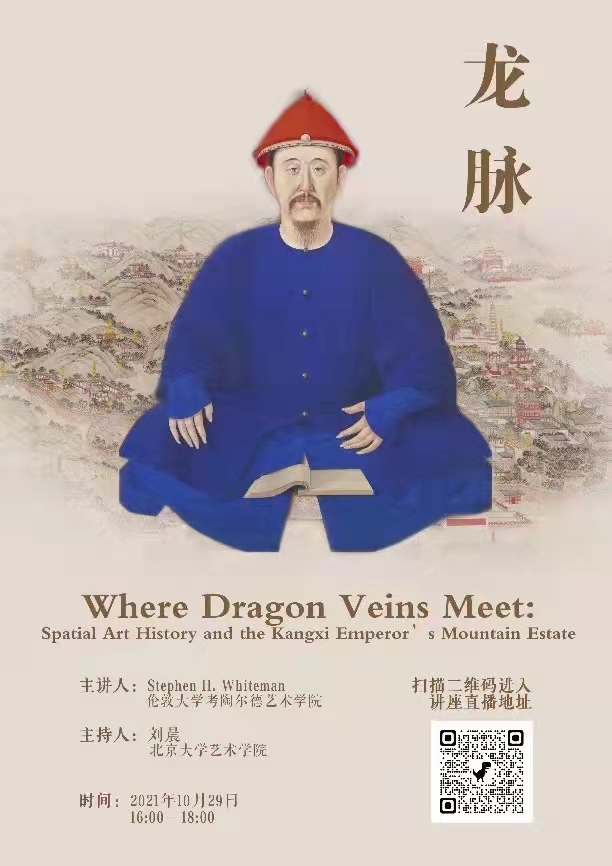
Speaker:
Stephen H.Whiteman (Senior Lecturer in Art and Architecture of China, University of London Courtauld Institute of Art )
Time:
October 29, 2021(Friday) 16:00-18:00
Venue:
Tencent Meeting
Organizers:
School of Arts Peking University
Host:
Liu Chen (Assistant Professor, Peking University School of Arts)
Language:
English with Mandarin translation
Abstract:
In the northeastern parts of Beijing, within the mountains between the
Capital and Inner Mongolia sits Chengde —— a prefecture-level city with
no more than a population of 500,000. By China’s standards today, this
city’s population made Chengde a relatively small city. Yet in the 18th
century, it was one of the Qing empire’s most important power centers.
Close to half the time in mid-year, the Qing court will move to
Chengde’s palace and garden complex —— the Mountain Estate to Escape the
Heat.
In 1702, the Kangxi Emperor placed a decree to build a new summer palace
in Rehe, which is today’s Chengde. This traveling palace — later named
as “Mountain Estate to escape the heat” (will be hereafter referred to
as Mountain Estate) —— actually became the alternate capital. In the
last decade of Kangxi Emperor’s life, he would live in this place from
late Autumn to early Spring every year. Majority of what remains of the
mountain estate garden palace today were from building and developments
in Qianlong’s time. It changed the environment and experience of living
in the mountain estate and shifted the basic design direction of it. As
such, many researchers have yet to resolve the problem of
differentiating mountain estate pictures between Kangxi and Qianlong’s
times, and from therein, how to extract the designs and the intentions
of constructing the mountain estate in Kangxi’s time.
Amidst, View of Rehe by Leng Mei is one real example of an existing
piece of the landscape of the mountain estate from Kangxi’s time. In the
artworks of this court painter who usually draws figure paintings in
small album formats, View of Rehe’s composition is unusual. We can see
the landscape of the Mountain Estate in Kangxi’s time preserved in this
piece of artwork via drawing techniques, landscape drawing, print,
perspective and measurement. In the transmedia space that the landscape
materials and painting construction compose, the landscape itself,
drawing techniques and demands of the imperial power gradually forms a
triangular position, exhibiting the importance of Qing’s Mountain Estate
in the auspicious fengshui geography, as well as expressing the
expectations of ideals for the empire and the image of an Emperor.
Biography:
Stephen H. Whiteman received both his MA in East Asian Studies and PhD
in Art History from Stanford University. He is currently a Senior
Lecturer in Art and Architecture of China in University of London
Courtauld Institute of Art. His research focuses on early modern history
of China in their global contexts, with an interest in landscape,
mapping and visual culture. His first book Thirty-Six Views: The Kangxi
Emperor’s Mountain Estate in Poetry and Prints received the ”John
Brinkerhoff Jackson Book Price from the Foundation for Landscape Studies
in 2017.
Scan the QR code below to participate!

We will be doing a live broadcast of this lecture via VooV. For
copyright protection, please do not record this activity in any way.
Written by: Vissly Chan Shun Ling
Edited by: Fu Jiaqi
Source: Peking University School of Arts